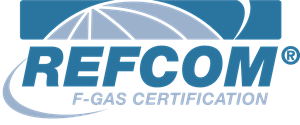Walk-in cold rooms are essential for businesses that require consistent temperature control. However, like any refrigeration system, they can develop operational issues that impact efficiency and lead to costly repairs.
Identifying problems early and implementing preventive measures ensures long-term reliability and reduced downtime. This guide covers common issues in walk-in cold rooms, their causes, and how to prevent costly breakdowns.
1. Temperature Fluctuations
Signs of the Issue:
- Food or stock freezing unexpectedly in chilled rooms.
- Inconsistent temperature readings from sensors.
- Increased energy consumption as the system works harder to maintain set temperatures.
Causes:
- Faulty thermostats or temperature sensors.
- Refrigerant leaks, reducing cooling capacity.
- Poor insulation, allowing heat transfer into the room.
Prevention:
- Calibrate thermostats and sensors every 6–12 months.
- Check refrigerant levels regularly and inspect for leaks.
- Ensure proper insulation around doors and panels.
2. Ice Build-Up on Evaporator Coils
Signs of the Issue:
- Frost or ice forming on the evaporator unit.
- Reduced cooling efficiency and higher energy usage.
- Water leaks inside the cold room due to melting ice.
Causes:
- Humidity entering through frequent door openings.
- Blocked air circulation, preventing heat exchange.
- Malfunctioning defrost cycles failing to remove excess ice.
Prevention:
- Schedule regular defrost cycles to prevent excessive ice buildup.
- Install air curtains or strip curtains to reduce humidity entry.
- Inspect and clean air vents to maintain airflow.
3. Excessive Condensation Inside the Cold Room
Signs of the Issue:
- Water droplets forming on ceilings, walls, and stored items.
- Slippery floors, increasing the risk of workplace accidents.
- Mould growth due to persistent dampness.
Causes:
- Poor humidity control allowing moisture buildup.
- Worn-out door seals, letting in warm air.
- Malfunctioning evaporator fans, failing to remove moisture.
Prevention:
- Install a dehumidifier in high-humidity environments.
- Check and replace door seals regularly to prevent air leaks.
- Ensure evaporator fans are fully operational.
4. Unusual Noises from the Refrigeration Unit
Signs of the Issue:
- Banging, rattling, or high-pitched whistling sounds.
- Increased noise levels compared to normal operation.
Causes:
- Loose fan blades or worn-out motor bearings.
- Refrigerant leaks, causing pressure variations.
- Faulty compressor units struggling to regulate temperature.
Prevention:
- Schedule routine inspections to check for loose components.
- Top up or replace refrigerant when necessary.
- Service the compressor unit annually to ensure smooth operation.
Get a fast no obligation quote today
5. High Energy Consumption
Signs of the Issue:
- Unexpectedly high electricity bills.
- Refrigeration unit running longer than usual.
- The cold room struggling to maintain set temperatures.
Causes:
- Clogged condenser coils reducing heat exchange.
- Poor insulation leading to constant temperature loss.
- Aging equipment consuming more power than necessary.
Prevention:
- Clean condenser and evaporator coils every 3–6 months.
- Upgrade to energy-efficient insulation materials.
- Consider replacing older refrigeration units with modern, low-energy models.
6. Door Failures and Air Leaks
Signs of the Issue:
- The cold room door not closing properly.
- Increased temperature fluctuations due to warm air entry.
- Condensation forming around door edges.
Causes:
- Worn-out door hinges and latches.
- Deteriorating rubber seals failing to provide an airtight closure.
- Structural issues with frame alignment.
Prevention:
- Inspect and tighten hinges every 6 months.
- Replace rubber door seals at the first sign of wear.
- Adjust door alignment if gaps appear.
7. Refrigerant Leaks
Signs of the Issue:
- The cold room struggling to reach set temperatures.
- Increased energy consumption due to inefficient cooling.
- Ice buildup on evaporator coils.
Causes:
- Damaged refrigeration lines.
- Corrosion in older systems.
- Poor installation practices causing loose fittings.
Prevention:
- Schedule regular refrigerant level checks to detect early signs of leakage.
- Use leak detection equipment for proactive monitoring.
- Replace corroded refrigeration lines before failure occurs.
8. Electrical Failures and Power Surges
Signs of the Issue:
- The refrigeration system turning off unexpectedly.
- Power fluctuations affecting the temperature.
Causes:
- Overloaded electrical circuits.
- Faulty wiring connections.
- Power surges damaging the compressor unit.
Prevention:
- Install voltage stabilisers to protect against surges.
- Conduct routine electrical inspections every 12 months.
- Upgrade older electrical panels if needed.
References
- UK Food Safety Refrigeration Guide, 2024
- Commercial Refrigeration Best Practices, 2023
Author Bio
Dr. Julian Carter is a highly experienced thermal systems expert with over 15 years in the field, holding a PhD in thermal systems. His career spans academic research, consulting, and teaching, focusing on air conditioning and refrigeration systems. Dr. Carter bridges the gap between theoretical advancements and practical applications, providing expert insights to organisations like ClimateWorks, where his guidance informs decision-making and industry best practices. Notably, he has worked on international projects with organisations such as Daikin Industries, the International Institute of Refrigeration (IIR), and the United Nations Environment Programme (UNEP). These collaborations addressed energy efficiency, sustainable refrigerants, and advanced cooling technologies. Currently a lecturer at Edinburgh University, Dr. Carter combines his expertise with a passion for educating the next generation of engineers and advancing climate control technologies.





